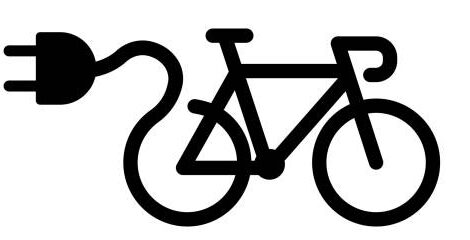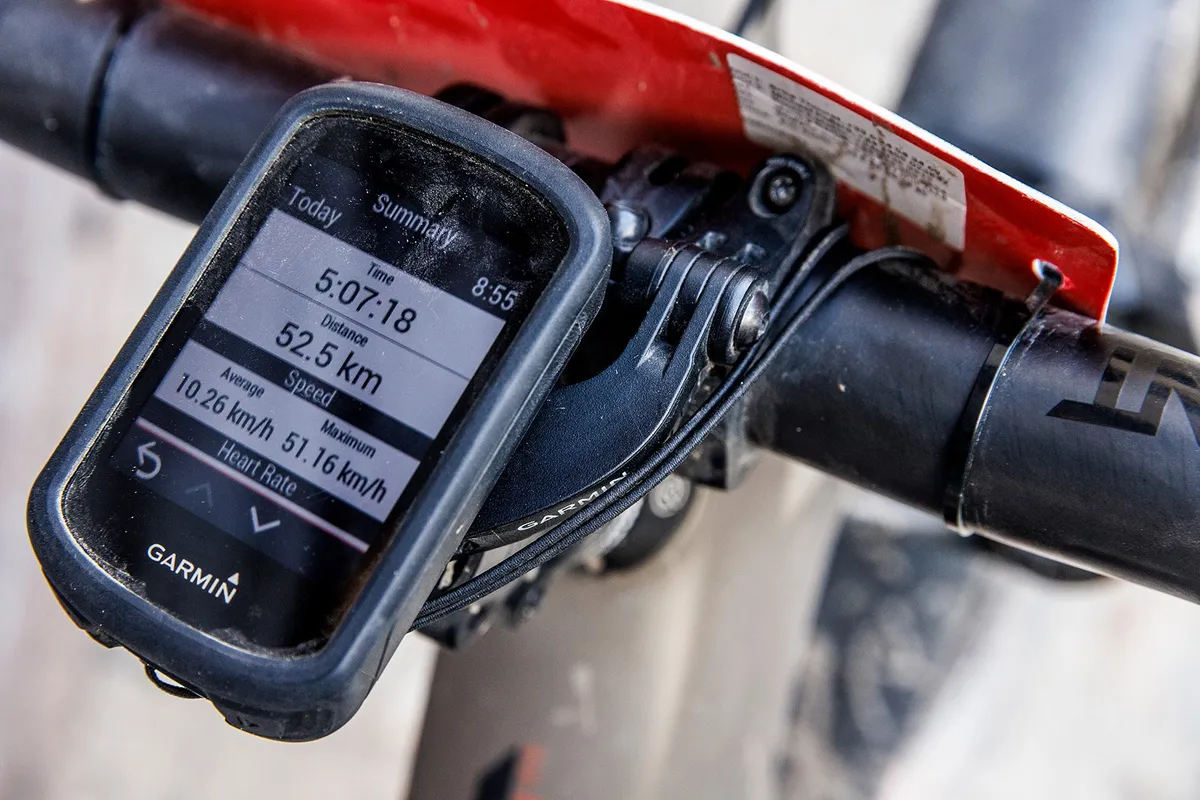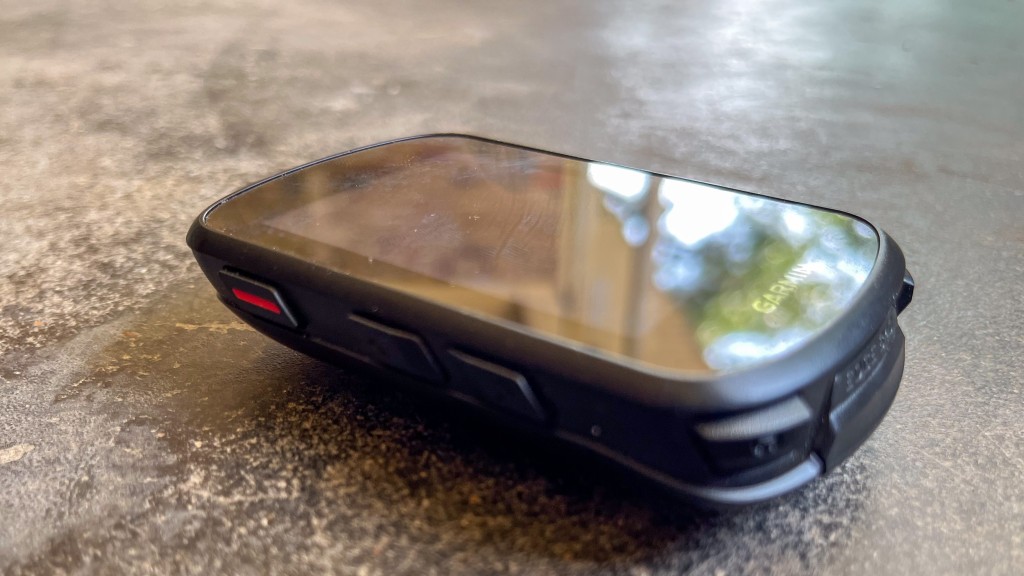Navigating the World of Cycling Computers: A Comprehensive Guide
The purpose of cycling computers has evolved significantly. They are becoming increasingly essential for cyclists of all levels. The growing demand for detailed performance data and seamless navigation fuels this trend. The market now offers a diverse range of features and technologies. From basic speed and distance tracking to advanced GPS mapping and real-time performance analysis, there’s a cycling computer for every need. Selecting from the best bike computers 2024 requires understanding these options. This guide helps readers choose the right cycling computer. It ensures they enhance their cycling experience.
Modern cycling computers offer an array of features. GPS tracking provides accurate location data and route navigation. Heart rate monitoring helps cyclists optimize their training intensity. Data fields display a wealth of information. This information includes speed, cadence, power, and elevation. Wireless connectivity allows seamless integration with smartphones and other devices. This enables easy data sharing and performance analysis. The best bike computers 2024 cater to diverse needs. They range from recreational riders to competitive athletes. This guide simplifies the selection process. It helps cyclists find the perfect computer for their individual requirements.
The technologies in cycling computers continue to advance. Features like turn-by-turn navigation, climb tracking, and smart notifications enhance the riding experience. Some models offer advanced training load analysis. They provide personalized insights to optimize performance and prevent overtraining. Integration with electronic shifting systems and smart trainers opens up new possibilities for data-driven training. With so many options available, choosing the right cycling computer can be daunting. This guide offers a structured approach. It helps cyclists evaluate their needs, compare features, and select the best bike computers 2024. Ultimately, it empowers them to make an informed decision.
Garmin Edge vs. Wahoo ELEMNT: A Head-to-Head Comparison of Leading Brands
When exploring the world of cycling computers, Garmin and Wahoo stand out as the dominant forces. For cyclists deliberating between these two titans, a direct comparison is essential. The best bike computers 2024 often come down to personal preference, but understanding the core differences can significantly simplify the decision-making process. Garmin’s Edge series, particularly models like the Edge 530, is known for its extensive features and customization options. Wahoo’s ELEMNT series, exemplified by the ELEMNT Bolt V2, prioritizes ease of use and a streamlined user experience.
A primary distinction lies in the user interface. Garmin employs a menu-driven system, offering a deep dive into data fields, activity profiles, and advanced metrics. This appeals to cyclists who enjoy granular control and detailed analysis. Wahoo, conversely, utilizes a smartphone-based setup for initial configuration and customization. This approach makes setting up the device and managing data fields remarkably intuitive. The best bike computers 2024 also distinguish themselves through their ecosystems. Garmin’s ecosystem includes a wide array of compatible devices, from smartwatches to cycling radar, creating a comprehensive data platform. Wahoo’s ecosystem is more focused, emphasizing integration with third-party apps and platforms like Strava, appealing to socially connected cyclists.
Consider specific features when choosing between Garmin and Wahoo. Garmin Edge devices often boast features like ClimbPro, which provides real-time information on upcoming climbs, and training load analysis, offering insights into training intensity and recovery. Wahoo ELEMNT devices excel in their zoom functionality, allowing riders to quickly adjust data fields on the fly. Battery life is also a key consideration. While both brands offer competitive battery performance, specific models may vary. Ultimately, the best bike computers 2024 for one cyclist might not be the best for another. Evaluating individual needs, desired features, and preferred user experience is crucial in making the right choice. Both Garmin and Wahoo offer compelling options, and understanding their respective strengths allows cyclists to select a device that perfectly complements their riding style.
How to Choose the Right Cycling Computer for Your Needs
Selecting from the best bike computers 2024 requires careful consideration of individual cycling needs and preferences. The ideal cycling computer for one cyclist might be entirely unsuitable for another. A systematic approach, factoring in budget, intended use, desired features, and battery life, is crucial for making an informed decision.
Begin by establishing a budget. Cycling computers range from affordable models offering basic functionalities to high-end devices packed with advanced features. Determine how much you’re willing to spend, understanding that a higher price often translates to more features, better build quality, and longer battery life. Next, consider the type of cycling you primarily engage in. Road cyclists might prioritize aerodynamics, detailed mapping, and seamless integration with electronic shifting systems. Mountain bikers, on the other hand, might value durability, trail-specific navigation, and advanced metrics like jump analysis. Gravel riders often seek a balance, requiring reliable navigation, robust battery life for long rides, and compatibility with various sensors. For the best bike computers 2024, GPS functionality is essential for tracking speed, distance, and location. Mapping capabilities are crucial for navigation, especially for exploring new routes. Heart rate monitoring allows for real-time feedback on exertion levels, while power meter compatibility enables precise training analysis. Data fields, customizable displays showing relevant metrics, should be configurable to your preferences. Lastly, battery life is a critical factor, especially for longer rides or multi-day adventures. Evaluate the manufacturer’s stated battery life and consider how frequently you’re willing to charge the device. A cycling computer that dies mid-ride can be frustrating and potentially dangerous.
Evaluate the features, weigh them against the cost. While advanced features can enhance the cycling experience, they’re not always necessary. Focus on the features that align with your specific needs and cycling goals. For example, if you’re primarily interested in tracking basic metrics like speed, distance, and time, a budget-friendly option with GPS may suffice. However, if you’re a serious cyclist looking to optimize your training, you may need to invest in a more advanced model with features like training load analysis, climb tracking, and smart notifications. The best bike computers 2024 come equipped with an array of features, but prioritizing your needs is key to finding the perfect fit. Remember to check customer reviews before making a final decision. These can provide valuable insights into the real-world performance and reliability of different cycling computers. Reading user experiences can help you identify potential drawbacks or unexpected benefits that might not be immediately apparent from product specifications. With careful research and a clear understanding of your needs, you can confidently choose the right cycling computer to elevate your riding experience.
Beyond the Basics: Exploring Advanced Features in Modern Cycling Computers
Modern cycling computers have evolved far beyond simply displaying speed and distance. The best bike computers 2024 offer a suite of advanced features designed to enhance training, improve performance, and provide a safer, more connected riding experience. These features cater to serious cyclists and enthusiasts looking to gain a competitive edge and maximize their time on the road or trail.
One significant advancement is the integration of training load analysis. High-end cycling computers can now track and analyze various metrics, such as training stress score (TSS), intensity factor (IF), and power zones, to provide insights into training load and recovery needs. This data helps cyclists optimize their training plans, prevent overtraining, and peak for important events. Climb tracking is another valuable feature, particularly for cyclists who frequently ride in hilly or mountainous terrain. These systems can automatically detect climbs, display gradient information, and track ascent data, providing valuable insights into climbing performance. Smart notifications keep cyclists connected without needing to reach for their phones. Incoming calls, text messages, and app alerts are displayed directly on the cycling computer screen, allowing riders to stay informed while remaining focused on the road. Incident detection is a crucial safety feature that can automatically alert emergency contacts in the event of a crash. Using built-in sensors, the computer can detect sudden impacts and send a notification to pre-selected contacts with the rider’s location. Integration with smart trainers and electronic shifting systems allows for seamless control and data synchronization. Cyclists can control their smart trainer’s resistance directly from their cycling computer, create and execute structured workouts, and record detailed performance data. Electronic shifting systems, such as Shimano Di2 or SRAM eTap, can be integrated to display gear information, battery levels, and even customize shifting behavior through the cycling computer interface. The best bike computers 2024 often have these features.
The best bike computers 2024 also boast enhanced connectivity options. Beyond basic smartphone pairing, they seamlessly integrate with a wide range of cycling accessories and sensors. This includes heart rate monitors, power meters, cadence sensors, and even tire pressure monitoring systems. By collecting data from these sources, cyclists can gain a comprehensive understanding of their performance and make data-driven decisions to improve their training and racing. Furthermore, advanced models offer ANT+ and Bluetooth connectivity, ensuring compatibility with a wide range of devices. The best bike computers 2024 offer turn-by-turn navigation with detailed mapping, allowing cyclists to explore new routes with confidence. Many devices come preloaded with maps, while others allow users to download specific regions or create custom routes. Advanced navigation features include off-course alerts, points of interest, and the ability to re-route based on current traffic conditions. These advanced features elevate the cycling experience, providing valuable data, enhanced safety, and seamless integration with other devices. For serious cyclists and enthusiasts, investing in a high-end cycling computer can be a worthwhile investment that unlocks new levels of performance and enjoyment.
The best bike computers 2024 provide many choices for you.
Budget-Friendly Options: Affordable Cycling Computers That Deliver Value
Finding the best bike computers 2024 doesn’t have to drain your wallet. Several affordable options deliver excellent value, providing essential features for tracking your rides without breaking the bank. These computers focus on core functionalities like GPS, speed, distance, and time, ensuring you have the data you need for effective training and enjoyable cycling experiences. Durability and ease of use are key considerations when selecting a budget-friendly model, ensuring it can withstand the rigors of regular cycling and provide a hassle-free experience.
Among the top contenders in the affordable category, the CatEye Padrone Digital Wireless stands out for its simplicity and reliability. It offers a clear display, easy-to-use interface, and essential metrics like speed, distance, and ride time. The Garmin Edge 130 Plus is another excellent choice, packing GPS capabilities and smartphone connectivity into a compact and affordable package, making it one of the best bike computers 2024 if you’re on a budget. It provides accurate tracking and allows you to upload your data to Garmin Connect for analysis. Similarly, the Lezyne Mini GPS offers a balance of features and affordability. It records GPS data, displays essential metrics, and connects to Lezyne’s Ally app for data analysis.
When considering budget-friendly options, it’s important to prioritize essential features and reliability over advanced functionalities. Look for models with good battery life, a clear display that’s easy to read in sunlight, and a user-friendly interface. Reading reviews from other cyclists can provide valuable insights into the real-world performance and durability of different models. While these computers may not offer all the bells and whistles of high-end devices, they provide the core functionality needed to track your rides, monitor your progress, and enhance your cycling experience, solidifying their place as some of the best bike computers 2024 for budget-conscious riders. Investing in one of these options allows you to enjoy the benefits of cycling technology without overspending.
The Importance of Connectivity: Linking Your Cycling Computer to Apps and Devices
Connectivity is paramount in modern cycling, transforming a simple ride into a data-rich experience. Integrating your cycling computer with smartphones, training applications like Strava, and external sensors unlocks a world of performance analysis and social sharing. The best bike computers 2024 seamlessly bridge the gap between your physical exertion and digital insights. This interconnectedness allows cyclists to meticulously track progress, analyze performance metrics, and share achievements with a global community.
Linking a cycling computer to a smartphone enables real-time data synchronization and smart notifications. Incoming calls, text messages, and other alerts are displayed directly on the computer screen, keeping cyclists connected without reaching for their phones. Furthermore, connecting to training apps like Strava allows for automatic uploading of ride data, eliminating manual entry and providing access to detailed performance analysis. Heart rate monitors and power meters, when connected, transmit valuable physiological data to the computer, providing a comprehensive picture of a cyclist’s effort and training load. The best bike computers 2024 offer a robust ecosystem of connectivity options, ensuring compatibility with a wide range of devices and platforms.
Connecting popular models like the Garmin Edge series or Wahoo ELEMNT devices to different apps is typically a straightforward process. Most computers utilize Bluetooth or ANT+ technology for wireless communication. Within the computer’s settings menu, users can typically find options to pair with smartphones, sensors, and other devices. Once paired, data transfer and synchronization occur automatically. For example, connecting a Garmin Edge to the Garmin Connect app allows for detailed ride analysis, course creation, and participation in online challenges. Similarly, pairing a Wahoo ELEMNT with the ELEMNT Companion App enables easy customization of data fields, map downloads, and route syncing. This seamless integration of hardware and software empowers cyclists to optimize their training, track their progress, and enhance their overall riding experience. Leveraging these connectivity features is crucial for maximizing the potential of even the best bike computers 2024.
Mounting Matters: Choosing the Right Mount for Your Cycling Computer
Selecting the appropriate mount for your cycling computer is crucial for both safety and convenience. A poorly chosen mount can lead to a dislodged device during a ride, while a well-selected mount ensures easy visibility and accessibility. This section explores the various types of mounts available, highlighting their advantages and disadvantages to assist you in making an informed decision when choosing one of the best bike computers 2024.
Several types of mounts cater to different riding styles and preferences. Out-front mounts position the cycling computer ahead of the handlebars, offering an unobstructed view and aerodynamic advantage. These are popular among road cyclists seeking optimal performance. Stem mounts, on the other hand, attach directly to the stem, providing a more discreet and secure option, favored by mountain bikers and those prioritizing a low profile. Handlebar mounts offer versatility, clamping directly to the handlebars and accommodating various positions and device sizes. When considering the best bike computers 2024, ensuring compatibility with your preferred mount type is essential. Brands like K-Edge and Bar Fly offer high-quality, durable mounts known for their reliability. These aftermarket options often provide enhanced adjustability and sturdier construction compared to stock mounts.
Compatibility is another critical factor. Different bike types may necessitate specific mount styles. For instance, integrated handlebars on some road bikes may require specialized mounts. Likewise, mountain bikes with limited handlebar space might benefit from a stem mount. Furthermore, consider the mounting system’s compatibility with your chosen cycling computer. While most mounts adhere to industry standards, verifying compatibility beforehand prevents frustration. Secure mounting is paramount, especially when navigating rough terrain. A robust mount minimizes vibrations and ensures the cycling computer remains firmly in place, providing uninterrupted data and navigation. Ultimately, the best mount enhances your riding experience by providing a secure, accessible, and visually optimal platform for your cycling computer. Therefore, taking the time to explore the options and selecting a mount that aligns with your needs is a worthwhile investment when considering one of the best bike computers 2024.
Maximizing Battery Life: Tips and Tricks for Extending Your Ride
Extending the battery life of your cycling computer is crucial for long rides and multi-day adventures. Several factors influence battery performance, and understanding these can help you optimize usage. Dimming the screen brightness is one of the most effective ways to conserve power. Most devices allow for manual adjustment or automatic brightness based on ambient light. Consider lowering the brightness to the minimum comfortable level, especially during daylight hours. This is particularly relevant when considering the best bike computers 2024. Many of the best bike computers 2024 models have very bright screens to enhance readability, but brightness dramatically affects battery runtime.
Disabling unnecessary features can also significantly extend battery life. GPS is a power-intensive function, so if you are riding in a familiar area, consider turning it off. Similarly, Bluetooth and Wi-Fi connectivity consume energy, so disable them when not actively syncing data or using connected features. Some cycling computers offer battery-saving modes that automatically manage these settings. These modes typically reduce screen refresh rates and limit background processes to maximize runtime. Knowing the typical battery life of your device, as highlighted in reviews of the best bike computers 2024, is essential for planning your rides.
Carrying a portable power bank is a practical solution for extended rides. A small, lightweight power bank can provide a significant boost to your cycling computer’s battery, ensuring you don’t run out of power mid-ride. Some users pre-plan charging points during very long rides. Furthermore, understand that some models of the best bike computers 2024 have replaceable batteries, although most do not. Understanding the consumption of features like heart rate monitoring and cadence sensors can inform how you choose to use the best bike computers 2024. By implementing these strategies, cyclists can confidently embark on longer journeys, knowing their cycling computer will last the distance, all while leveraging the advantages of the best bike computers 2024.




